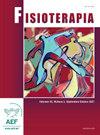Efecto del tratamiento de estimulación eléctrica nerviosa transcutánea en el músculo tríceps sural tras un accidente cerebrovascular. Estudio de caso
Q4 Health Professions
引用次数: 0
Abstract
Background
In Cerebrovascular Accident (CVA) the brain tissue is affected by a sudden interruption of blood supply, which determines the ability to control the affected side and compromises the coordination of agonist and antagonist muscles, experiencing spasticity increased muscle tone.
Objective
The objective of this case study was to evaluate the changes in the triceps surae muscle to stimulate improvement in motor function suffering from spasticity following a cerebrovascular event through treatment with transcutaneous electrical nerve stimulation.
Patient
A left hemiparesis secondary to CVA and three-year evolution spasticity in the triceps surae clinical case is presented.
Material and methods
Transcutaneous Nerve Electrostimulation was applied to the triceps surae. It was evaluated at the beginning and at the end of the thirteen sessions through the Joint Mobility Test to assess the left ankle, the Asworth scale for muscle tone, and the skeletal muscle ultrasonography of the triceps surae.
Results
The affected limb presented significant clinical changes in ankle mobility, improvement in muscle tone and modifications in the morphology of the triceps surae, reducing the fibrosis that was found at the beginning of the treatment.
Conclusions
The changes presented in the affected limb in the range of motion are interpreted into the functionality and morphology of the triceps surae with increased elasticity derived from the mechanobiology of muscle function; however, future research is required with a wider sample, suggesting adding other physical agents such as therapeutic exercise to obtain statistically significant changes.
脑卒中后经皮神经电刺激治疗对南三头肌的影响。案例研究
在脑血管意外(CVA)中,脑组织受到血液供应突然中断的影响,这决定了控制受累侧的能力,并损害了激动剂和拮抗剂肌肉的协调,经历肌肉张力增加的痉挛。目的本病例研究的目的是评估通过经皮神经电刺激治疗脑血管事件后痉挛的肱三头肌表面肌的变化,以刺激运动功能的改善。本文报道一例继发于CVA的左偏瘫伴三年演化性三头肌痉挛的临床病例。材料与方法经皮神经电刺激肱三头肌表面。在13个疗程的开始和结束时,通过关节活动测试来评估左脚踝,阿斯沃思肌肉张力量表和三头肌表面骨骼肌超声检查来评估。结果受影响肢体在踝关节活动度、肌肉张力改善和三头肌表面形态改变方面表现出明显的临床变化,减少了治疗开始时发现的纤维化。结论患肢在运动范围内的变化可以解释为三头肌表面的功能和形态变化,肌肉功能的力学生物学导致了三头肌弹性的增加;然而,未来的研究需要更广泛的样本,建议加入其他物理因素,如治疗性运动,以获得统计上显著的变化。
本文章由计算机程序翻译,如有差异,请以英文原文为准。
求助全文
约1分钟内获得全文
求助全文
来源期刊

Fisioterapia
Health Professions-Physical Therapy, Sports Therapy and Rehabilitation
CiteScore
0.50
自引率
0.00%
发文量
37
期刊介绍:
Publicación Oficial de la Sociedad Española de Fisioterapeutas. Sus páginas ofrecen desde artículos originales hasta revisiones, pasando por el estudio de casos o los actos más importantes relacionados con la especialidad.
 求助内容:
求助内容: 应助结果提醒方式:
应助结果提醒方式:


